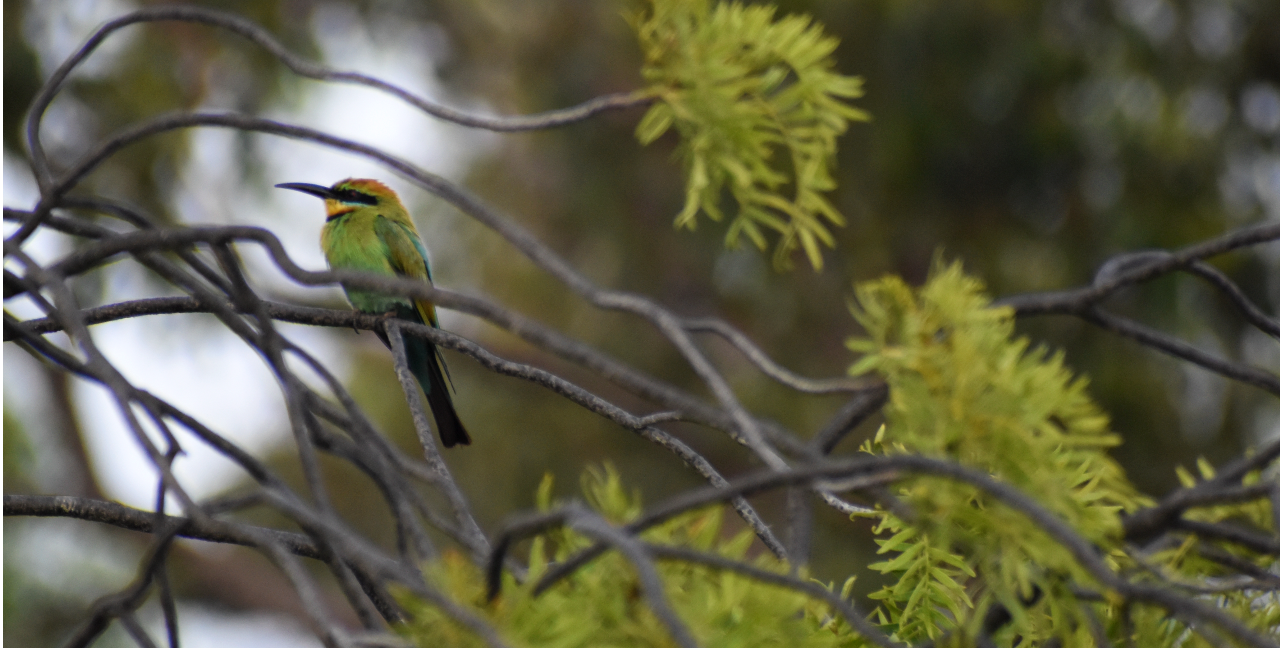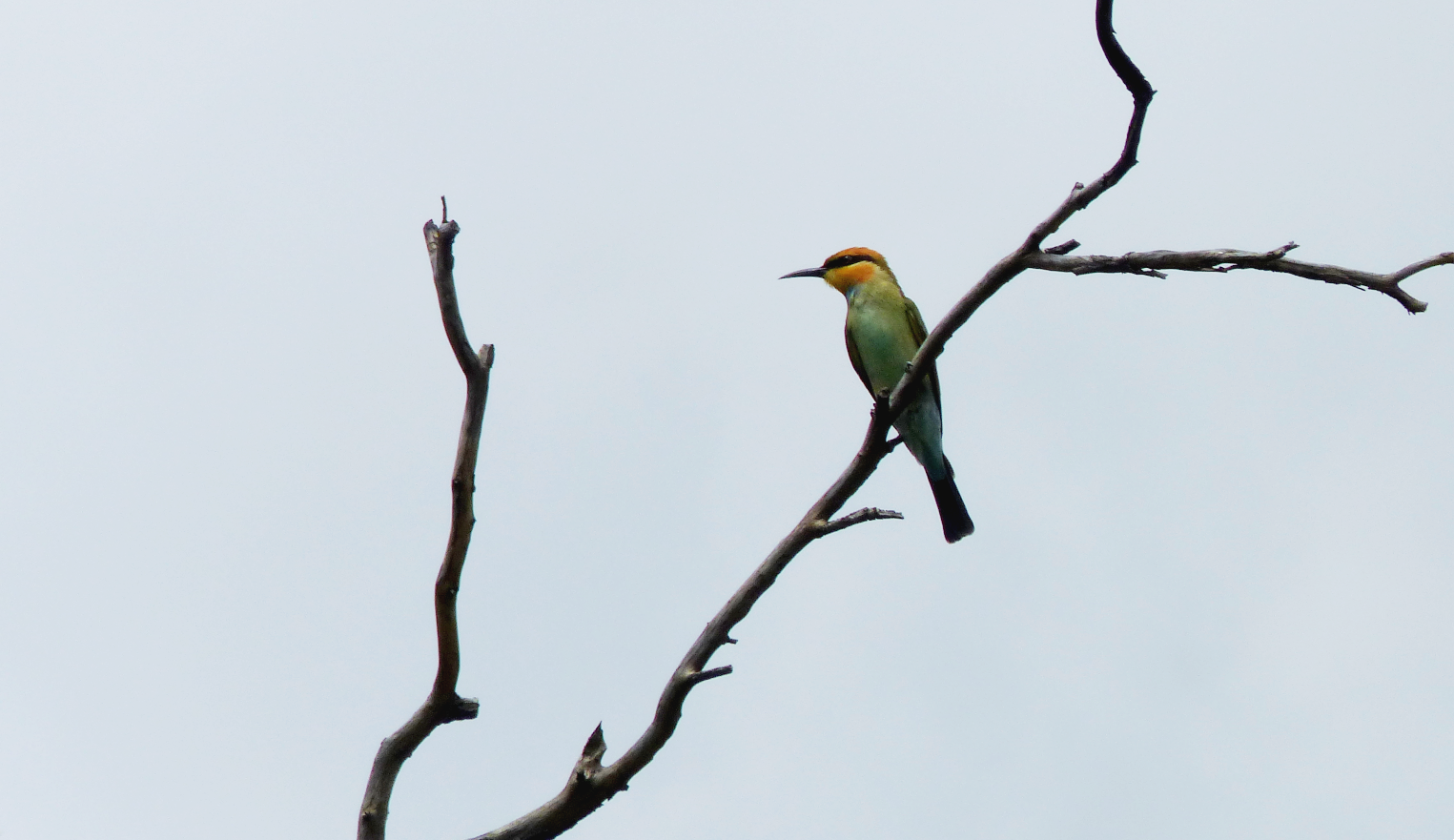Traditional Paakantyi Language of the Kurnu-Baakandji nation used in this article. (L. A. Hercus – Paakantyi Dictionary).
The Commonwealth Environmental Water Holder’s (CEWH) Science Program funds the Flow Monitoring, Evaluation and Research (Flow–MER).

Said to have created the rainbow itself in some Dreamtime stories, the Rainbow bee-eater (Merops ornatus) (Figure 1) lives up to its name, with a plumage of green, blue, chestnut and yellow. We like to keep an eye on this significant migratory land bird species within the Flow-MER program as flow outcomes can contribute to the protection and conservation of the species and its preferred habitat.
The Rainbow bee-eater inhabits the adjoining woodlands to the wetlands of the Warrego River (Figure 2). The trees and shrubs of the woodlands rely on periodic inundation, which can be supported by environmental water, or by access to the water table.
The bee-eater can be found diving and chasing after insects, mainly bees (thintinura) and wasps, as well as dragonflies, beetles and butterflies (pilyu-pilyuka) among the woodlands and above the wetlands where the insects are abundant. The Bee-eater will rub bees (thintinura) and wasps against their perch to remove stingers and venom glands before tucking in.
Water for the environment plays a significant role in maintaining and providing for not just the wetland ecosystem but the adjoining ecosystems and their inhabitants year-round.
A long-term contributor to Flow-MER, Dr Paul Frazier, recounted a magical story.
“I was sitting by myself on the banks of Boera Dam on one trip out at Toorale National Park. All around me flew multiple Rainbow Bee-eaters. They would launch themselves from branches, making rapid twists and turns to catch flying insects in their bills, before returning to their perches to eat their catch. It remains one of my most fond memories of Toorale.”

Managing water for the environment is a collective and collaborative effort, working in partnership with communities, private landholders, scientists and government agencies – these contributions are gratefully acknowledged.
We acknowledge the Traditional Owners of the land on which we live, work and play. We also pay our respects to Elders past, present and emerging.


